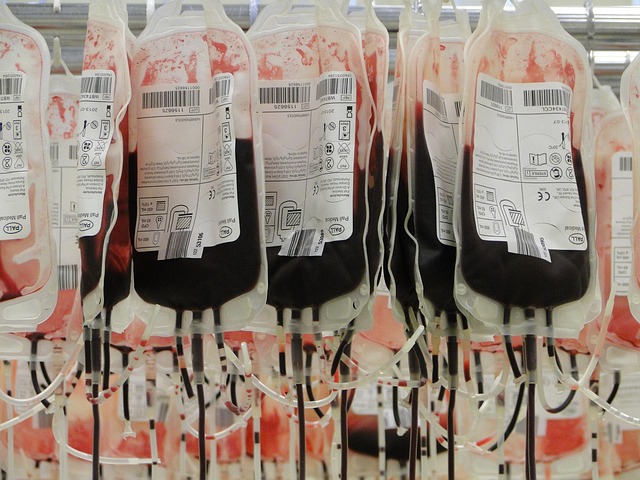Iron deficiency anemia, a common blood disorder causing fatigue and breathlessness, is manageable in the UK with proper care. Healthcare professionals diagnose it using tests like complete blood counts (CBCs) and ferritin levels, guided by NHS guidelines. While not primary, a UK Testosterone Blood Test aids in assessing iron stores and personalizing treatment, which may include dietary changes or medical interventions, based on severity. Accurate diagnosis and timely treatment, emphasizing hemoglobin and ferritin levels, are crucial to managing anemia effectively.
Iron deficiency anemia, a common blood disorder, affects millions worldwide. It arises from insufficient iron intake or absorption, leading to reduced red blood cell production. This article explores its impact and delves into the diagnostic process using UK-focused perspectives on blood tests, a crucial tool for identification. We’ll guide you through interpreting results and available treatment options, emphasizing the importance of early detection through simple yet effective methods like the UK testosterone blood test.
- Understanding Iron Deficiency Anemia and its Impact
- The Role of Blood Tests in Diagnosis: UK Perspective
- Interpreting Results and Treatment Options
Understanding Iron Deficiency Anemia and its Impact
Iron deficiency anemia is a common blood disorder characterized by low levels of iron in the body. Iron plays a crucial role in producing hemoglobin, a protein responsible for carrying oxygen from the lungs to all parts of the body. When iron levels are insufficient, it leads to reduced hemoglobin production, resulting in symptoms such as fatigue, weakness, pale skin, and shortness of breath. This condition can significantly impact daily life, affecting energy levels, cognitive performance, and overall well-being.
In the UK, where access to healthcare is readily available, a simple UK Testosterone Blood Test can be a game-changer in detecting iron deficiency anemia early on. Healthcare professionals often recommend this test as part of routine check-ups or when symptoms are present. By analyzing blood samples, the test provides valuable insights into iron levels, enabling timely interventions and appropriate treatment options to manage and prevent further complications.
The Role of Blood Tests in Diagnosis: UK Perspective
In the UK, blood tests play a pivotal role in diagnosing iron deficiency anaemia. These tests are essential tools for healthcare professionals to identify and manage this common yet potentially serious condition. Typically, a UK testosterone blood test might not be the initial choice for detecting anaemia; instead, doctors often recommend complete blood counts (CBCs) or specific iron-related tests like ferritin levels. A CBC provides insights into different blood cell types, allowing for the detection of abnormal red blood cells that could indicate anaemia. Ferritin, a protein storing iron, is another key marker—low ferritin levels suggest iron deficiency.
The UK National Health Service (NHS) guidelines emphasize the importance of accurate diagnosis and prompt treatment. Blood tests offer a non-invasive way to assess iron stores in the body, which is crucial for determining the severity of anaemia and tailoring treatment accordingly. This approach ensures that patients receive appropriate care, whether it’s dietary changes, oral supplements, or more intensive medical interventions.
Interpreting Results and Treatment Options
Interpreting test results is a crucial step in managing iron deficiency anemia. Your healthcare provider will examine the levels of hemoglobin, red blood cells (RBCs), and ferritin in your blood sample. A UK testosterone blood test might also be recommended to rule out hormonal imbalances that could contribute to symptoms. Normal ranges vary slightly between labs, but generally, a hemoglobin level below 12 g/dL in women or 13.5 g/dL in men may indicate anemia. If results show low ferritin levels, it suggests a lack of iron storage, which is characteristic of iron deficiency.
Treatment options depend on the severity of anemia and individual health status. Mild cases might be managed with dietary changes, such as increasing iron-rich foods like dark leafy greens, beans, and fortified cereals. More severe cases may require oral or intravenous iron supplements. In some instances, underlying conditions like gastrointestinal disorders or blood loss from menstruation or injury need to be addressed. Consulting a healthcare professional is essential for accurate diagnosis and personalized treatment plans.
Iron deficiency anemia is a common yet preventable condition, especially with early detection through appropriate blood tests like the UK testosterone blood test. By understanding the symptoms and leveraging diagnostic tools effectively, healthcare professionals can ensure timely treatment, which may include dietary adjustments or supplementation to restore iron levels and overall health. This concise overview highlights the importance of simple yet powerful methods like blood tests in managing this treatable anemia.
